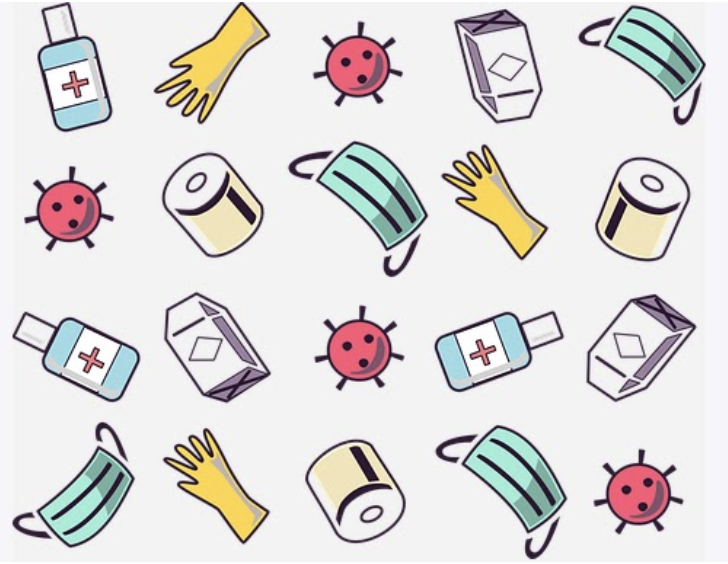
Masks are very important to stopping the spread of COVID-19; however, they only work if they are used properly! The proper wearing, removing, and taking care of your mask are simple methods that are used to ensure that you protect yourself and others.
How to put it on:
Kaiser permanente recommends checking that there are no gaps in your mask, neither on your sides nor at the bridge of your nose. Cover your mouth, nose, and chin snugly with your mask. For those who wear glasses, this also helps to stop your breath fogging your glasses! Always wash your hands with soap and water or use alcohol based sanitizer before touching your mask. Remember, the inside needs to stay clean because it is touching your mouth—if you touch your mask with dirty hands, you will deposit germs into your body. Speaking of hands, never touch the cloth of your mask—this is what is capturing the germs! Similarly, if you are talking on the phone, make sure to hold your phone away from your mask so it does not also become contaminated.
How to remove:
Again, never touch the front of your mask; this includes pulling up or down on the front of your mask to briefly talk or eat. Instead, remove your mask from the straps behind your ears. Duke University’s medical school recommends that if you need to take off and store your mask (such as before and after driving), carefully take off your mask by the straps and place your mask on a clean paper towel. Place your mask facing down, with the straps not touching the outside or inside of the mask. Then, store your mask in a clean paper bag. When you are done using a mask, wash it after each use.
Tips for if your mask does not fit:
Slippery mask getting you down? Take one strap of your mask at a time, twisting them so they form a figure eight. Then, place the outer loop of your created figure eight, around your ear, and this will help to fix large straps. Additionally, you can also tie a small knot on each strap, which will slightly shorten your straps and keep them more secure around the ears. If you are still struggling to find a mask that works for you, experiment with different shapes and sizes, and do not try to use another piece of clothing in place of a mask. Many people talk about making masks out of T-shirts and other articles of clothing; however, masks protect best when they are dense enough. If you hold up your mask to a light and see no light penetrating through, and if you cannot blow out a candle while wearing a mask, then germs will not get through either!
Lastly, as wonderful as masks are, masks are most effective when we are keeping six feet of social distance.
Information Resources:
